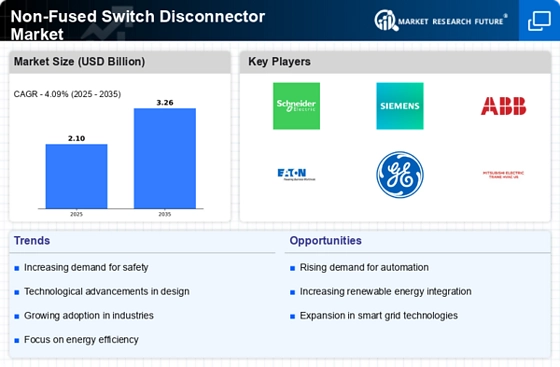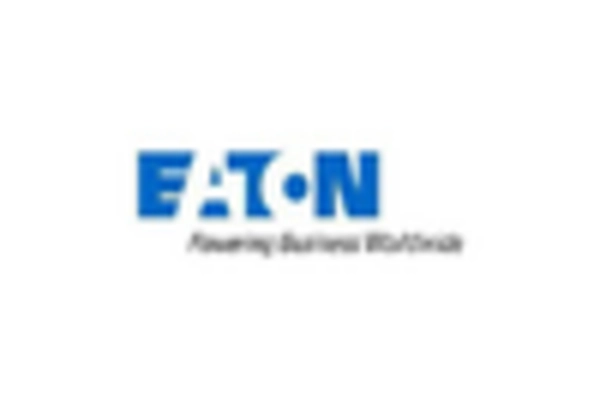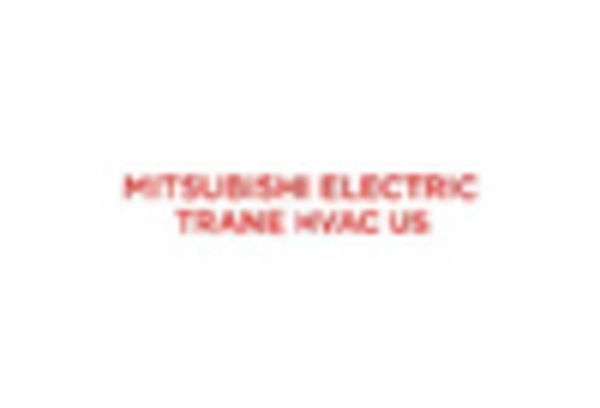Increasing Industrial Automation
The Non-Fused Switch Disconnector Market is also being driven by the rise of industrial automation. As manufacturing processes become increasingly automated, the need for reliable electrical components that can handle high loads and provide safe disconnection is paramount. Industries are investing in advanced electrical systems that require robust disconnectors to ensure operational continuity and safety. The automation market is expected to grow at a compound annual growth rate of 9% over the next few years, which could lead to a corresponding increase in demand for non-fused switch disconnectors. This trend indicates a strong correlation between industrial automation and the Non-Fused Switch Disconnector Market.
Growth in Renewable Energy Sector
The Non-Fused Switch Disconnector Market is poised to benefit from the rapid expansion of the renewable energy sector. As countries invest heavily in solar, wind, and other renewable energy sources, the need for reliable electrical components becomes paramount. Non-fused switch disconnectors play a crucial role in ensuring the safe and efficient operation of renewable energy systems. The International Energy Agency reports that renewable energy capacity is expected to increase by over 50% in the next five years, creating a substantial demand for electrical components that support this growth. This trend suggests that the Non-Fused Switch Disconnector Market will likely see increased opportunities as the renewable energy landscape evolves.
Rising Demand for Energy Efficiency
The Non-Fused Switch Disconnector Market is experiencing a notable increase in demand for energy-efficient solutions. As industries strive to reduce operational costs and enhance sustainability, the adoption of non-fused switch disconnectors is becoming more prevalent. These devices facilitate efficient energy management by providing reliable disconnection of electrical circuits without the need for fuses. According to recent data, the energy efficiency market is projected to grow significantly, with a compound annual growth rate of approximately 8% over the next five years. This trend indicates a strong alignment between energy efficiency initiatives and the Non-Fused Switch Disconnector Market, as businesses seek to optimize their energy consumption and minimize waste.
Focus on Safety and Compliance Standards
Safety and compliance standards are becoming increasingly stringent across various industries, which is positively impacting the Non-Fused Switch Disconnector Market. Regulatory bodies are enforcing stricter guidelines to ensure the safety of electrical installations, prompting industries to adopt reliable disconnection solutions. Non-fused switch disconnectors are recognized for their ability to provide safe isolation of electrical circuits, thereby meeting compliance requirements. The market for electrical safety equipment is projected to grow by approximately 7% annually, reflecting the heightened focus on safety standards. This trend suggests that the Non-Fused Switch Disconnector Market will continue to thrive as industries prioritize compliance and safety in their operations.
Technological Innovations in Electrical Components
Technological advancements are significantly influencing the Non-Fused Switch Disconnector Market. Innovations in materials and design are enhancing the performance and reliability of these devices. For instance, the introduction of smart disconnectors equipped with monitoring capabilities allows for real-time assessment of electrical systems, thereby improving safety and efficiency. The market for smart electrical components is projected to grow at a rate of 10% annually, indicating a shift towards more intelligent solutions in the electrical sector. This evolution suggests that the Non-Fused Switch Disconnector Market will continue to adapt and innovate, meeting the demands of modern electrical infrastructure.
















Leave a Comment